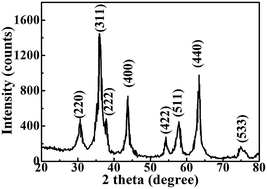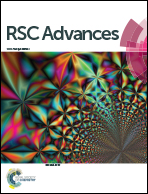Core–shell-structured nickel ferrite/onion-like carbon nanocapsules: an anode material with enhanced electrochemical performance for lithium-ion batteries
Abstract
Core–shell-structured nanocapsules consisting of a nickel ferrite (NiFe2O4) nanoparticle core encapsulated in an onion-like carbon (C) shell are prepared by a modified arc-discharge method followed by an air-annealing process. Lithium-ion batteries fabricated using the nanocapsules as an anode material exhibit a stable specific capacity of 914 mA h g−1 after 500 cycles at a current density of 0.1 C. Varying the rate of the charge–discharge current from 0.1 to 4 C does not show negative effects on the recycling stability of the nanocapsules and a recoverable specific capacity as high as 914 mA h g−1 is obtained. The introduction of the onion-like C shell and the presence of the void spaces are found to increase the contact areas between the electrolyte and the nanocapsules for improved electrolyte diffusion, to enhance the electronic conductivity and ionic mobility of the NiFe2O4 nanoparticle cores, and to accommodate the change in volume during the lithium-ion insertion/extraction process.


 Please wait while we load your content...
Please wait while we load your content...